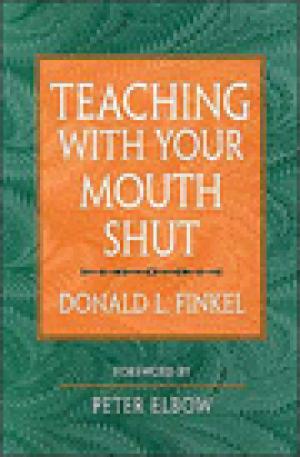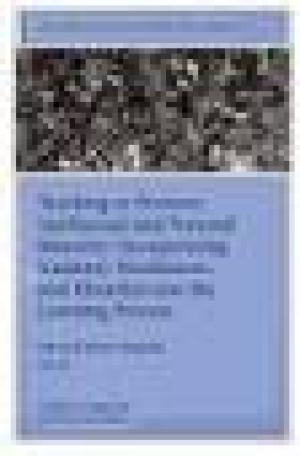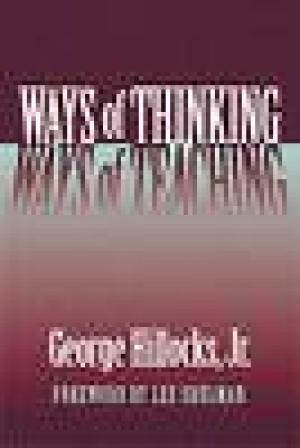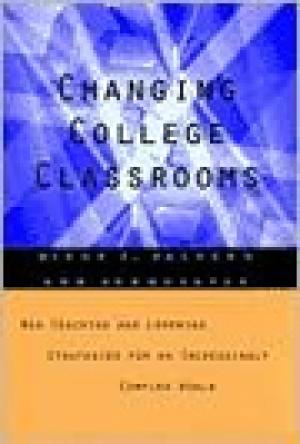Resources
Based on the Situational Leadership model of Hersey and Blanchard, the Staged Self-Directed Learning Model proposes that learners advance through stages of increasing self-direction and that teachers can help or hinder that development. Good teaching matches the learner's stage of self-direction and helps the learner advance toward greater self-direction. Specific methods are proposed for teaching students at each stage, although many different teaching styles are good when appropriately applied. Several pedagogical difficulties are explained as mismatches between teacher style and learner stage, especially the mismatch between a student needing direction and a non-directive teacher. The model is applied to a course, a single class, and the overall curriculum.

Teaching with Your Mouth Shut is not intended as a manual for teachers; it aims to provoke reflection on the many ways teaching can be organized. (From the Publisher)
This seminal 1996 essay, still widely referenced, describes some of the most effective and appropriate ways to use technology to advance the “Seven Principles for Good Practices in Undergraduate Education (the widely influential1987 Chickering and Gamson article).

In honor of the new century and the twentieth anniversary of New Directions for Teaching and Learning, this issue reviews the past and current research on teaching, learning, and motivation, and envisions where the field is headed in the next century. (From the Publisher)

Learning from Our Lives is the first professional guide to using educational biography with adult learners. It offers anecdotes and narratives, interpretations and analyses, and numerous examples of different biographical approaches. Written for practitioners who conduct adult educational programs in formal or informal settings, this book can help teachers, trainers, career counselors, and human resource professionals to empower learners in assuming greater responsibility for their education and development. (From the Publisher)

Revealing that it is not what students think, but rather how they think that is important to the learning process, the contributors to this issue explore the full-range of cognitive and emotional dimensions that influence how individuals learn—and they describe teaching practices for building on these to help students develop intellectually and personally. They examine how students' unique understanding of their individual experience, themselves, and the ways knowledge is constructed can mediate learning. They look at the influence of gender, race, ethnicity, and sexual orientation in shaping the learning process and examine how to create a culturally responsive learning environment for both students and faculty. The issue also explores the role of service learning in developing a strong sense of the caring self, examines the opportunities and challenges of expressing cultural identity in the learning community, and offers various strategies for linking learning goals to students' views of knowledge. (From the Publisher)

Ways of Thinking, Ways of Teaching presents a new model of teacher thinking and action–one that explains teacher decisions about what and how to teach. Combining qualitative and quantitative data drawn from observations and interviews with urban teachers of writing, George Hillocks argues that teacher knowledge is not simply transferred from some source to the teacher. Rather, it is constructed on the basis of assumptions about epistemology, students, and subject matter. The fact of this construction helps to explain why teacher education has had so little effect on changing the classroom behavior of teachers from one generation to the next. Unlike other research on teacher thinking, this book examines what actually happens in composition classrooms, presenting large chunks of representative transcripts for analysis. (From the Publisher)

"This book is an exciting and highly useful addition to the literature on higher education and teaching. It provides concrete information and suggestions for the improvement of teaching, student learning, and the whole educational process" - from the foreword by Lee R. Kershner, former Senior Vice Chancellor for Academic Affairs, California State University System (CSU), and Jacquelyn Ann K. Kegley, co-chair, Advisory Board. CSU Institute for Teaching and Learning. Providing college students with the knowledge, skills, and abilities that will prepare them for today's complex world demands a major transformation in college classrooms - from passive to active learning, from traditional textbooks to hands-on use of technology, from restrictive ways of thinking to diverse multicultural perspectives. This book combines a range of promising instructional strategies with helpful guidelines for assessing the effectiveness of instruction. It will help faculty and administrators equip students with the creative, critical, technological, and problem-solving skills - as well as a coherent sense of multicultural awareness - necessary to thrive in a rapidly changing society. (From the Publisher)